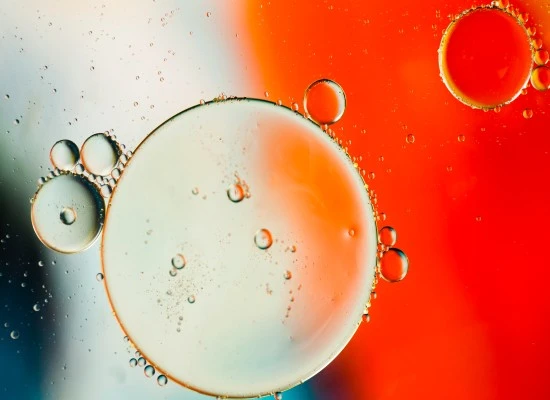TABLE OF CONTENTS
Menu
TABLE OF CONTENTS
Menu
A food defoamer is a chemical agent used to reduce and prevent foam formation during food processing. Foam can cause several issues, including reduced efficiency, contamination, and product quality problems. Food defoamers work by destabilizing foam bubbles, allowing them to collapse and preventing new foam from forming. They are crucial in various stages of food production, such as brewing, dairy processing, and packaging, ensuring smooth operations and maintaining high product standards. By controlling foam, food defoamers enhance productivity and product quality, making them essential in the food industry.
Types of Food Defoamers
Silicone-Based Defoamers
Silicone-based food defoamers are widely used due to their high efficiency and effectiveness. These defoamers have low surface tension, allowing them to quickly spread across foam bubbles and destabilize them. They are commonly used in processes like beverage production and dairy processing, where rapid foam control is essential. Silicone defoamers are also known for their stability under various temperature and pH conditions, making them versatile for different food processing applications.
Non-Silicone Defoamers
Oil-Based Defoamers: These defoamers use natural or synthetic oils to control foam. They are effective in environments where silicone defoamers might not be suitable, such as certain organic food processes.
Polymer-Based Defoamers: These defoamers consist of polymers that can be tailored to specific applications. They are highly effective in continuous processes where foam control is critical.
Surfactant-Based Defoamers: These defoamers reduce the surface tension of liquids, preventing foam formation. They are often used in food processing and packaging to ensure smooth operations. Non-silicone defoamers are particularly advantageous for their tailored applications and regulatory compliance in specific food products.
How Food Defoamers Work
Mechanism of Action
Food defoamers work by spreading across the surface of foam bubbles, causing them to destabilize and collapse. This action prevents new foam from forming and breaks down existing foam, ensuring smooth operation in food processing.
Chemical Properties
Food defoamers are effective due to their unique chemical properties, such as low surface tension and hydrophobic characteristics. These properties enable them to quickly spread over foamy surfaces and disrupt the foam structure, making them highly efficient in controlling foam.
Applications in the Food Industry
Food Industry
Beverage Production: Food defoamers are essential in beverage production, including brewing and soda manufacturing. They prevent excessive foam during fermentation and carbonation processes, ensuring consistent product quality and efficient production.
Food Processing: In food processing, defoamers are used in dairy products, sauces, and soups. They help control foam that forms during mixing, heating, and cooling processes, enhancing production efficiency and maintaining the desired texture and appearance of the final product.
Packaging: Food defoamers play a critical role in packaging operations by preventing foam during filling and sealing processes. This ensures smooth and efficient packaging, reducing downtime and waste, and maintaining product integrity.
Benefits of Using Food Defoamers
Efficiency and Performance
Food defoamers significantly improve processing speed by reducing foam-related interruptions. This leads to smoother operations and higher product quality, ensuring consistency across batches.
Safety and Compliance
Using food defoamers helps meet stringent food safety standards. They are formulated to be safe for use in food products, ensuring compliance with regulatory requirements and maintaining consumer trust.
Economic Advantages
Food defoamers offer cost savings in production by minimizing downtime and reducing waste. Efficient foam control leads to lower operational costs and higher yield, making them a valuable investment in food processing operations.
Selecting the Right Food Defoamer
Factors to Consider
Type of Food Product and Process Conditions: Different food products and processes have unique requirements. Consider factors such as temperature, pH, and specific production stages when selecting a food defoamer.
Regulatory Requirements: Ensure the chosen food defoamer complies with relevant food safety regulations and standards, such as those set by the FDA or EFSA.
Formulation and Concentration
Importance of Correct Formulation: Selecting the right formulation is crucial for effective foam control. The formulation should match the specific needs of the application.
Recommended Dosages: Follow manufacturer guidelines for recommended dosages to achieve optimal results. Proper dosage ensures effective foam control without affecting the quality of the food product.
Common Issues and Solutions
Foam Formation Challenges
Common Problems: Foam can cause several issues in food processing, including overflow, reduced efficiency, and contamination.
How Food Defoamers Address These Issues: Food defoamers effectively control foam by breaking down bubbles and preventing new foam from forming, ensuring smooth and efficient operations.
Optimization Tips
Maximizing Effectiveness: Apply food defoamers at points where foam forms most rapidly. Adjust the concentration based on the process conditions to achieve optimal defoaming.
Best Practices: Follow manufacturer guidelines for application and dosage. Regularly monitor foam levels and adjust defoamer usage as needed to maintain process efficiency and product quality.
Safety and Handling
Safety Precautions
Handling and Storage: Store food defoamers in cool, dry places away from direct sunlight. Ensure containers are tightly sealed to prevent contamination. Use appropriate personal protective equipment (PPE) such as gloves and goggles during handling.
Safety Data: Review the Safety Data Sheet (SDS) for specific information on potential hazards, including skin or eye irritation. Follow recommended safety measures to mitigate risks.
Regulatory Compliance
Overview of Food Industry Regulations: Food defoamers must comply with food safety regulations set by agencies such as the FDA and EFSA.
Ensuring Compliance: Regularly review and update practices to align with current regulations. Maintain proper documentation and ensure all employees are trained in compliance standards.

Conclusion
Food defoamers are essential in ensuring efficient and high-quality food production. By effectively controlling foam, they enhance processing speed, ensure product safety, and provide economic benefits. When selecting a food defoamer, consider the type of food product, process conditions, and regulatory requirements. Proper formulation and dosage are crucial for optimal performance. Addressing common foam formation challenges with the right defoamer can significantly improve operational efficiency. Adhering to safety and handling guidelines, along with regulatory compliance, ensures the safe and effective use of food defoamers in various applications.
Contact Us
Questions or looking for a quote?





